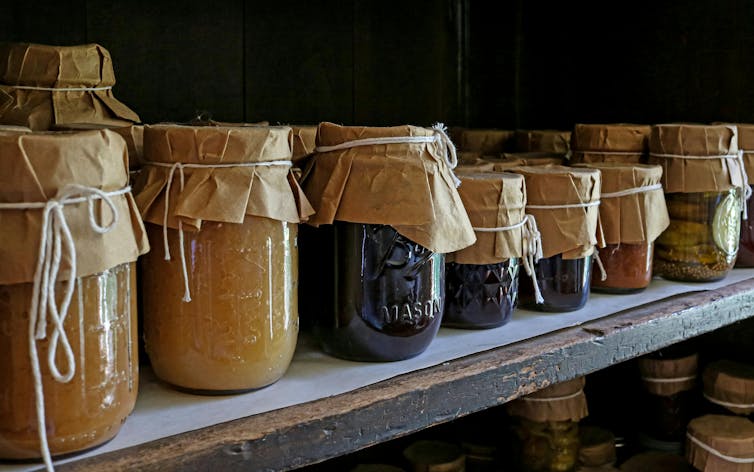The news last week that three people in Sydney were hospitalised with botulism after receiving botox injections has raised questions about the regulation of the cosmetic injectables industry.
Author
- Thomas Jeffries
Senior Lecturer in Microbiology, Western Sydney University
The three women allegedly received injections of unregulated anti-wrinkle products from the same provider at a Western Sydney home in January .
The provider, who is not a registered health practitioner, is allegedly also linked to a case of botulism that occurred following a botox injection in Victoria in 2024.
The provider has been banned from performing cosmetic procedures in New South Wales and Victoria while the incidents are investigated. Meanwhile, health authorities in both states have issued warnings about the practitioner.
So, what exactly is botulism? And how can it be linked to botox?
Botox and botulism
Botox, or botulinum toxin, is a drug made from a toxin produced by the bacterium Clostridium botulinum .
The botox toxin is a neurotoxin, which means it prevents the functioning of cells in the central nervous system. Specifically, it blocks the messages your nerves send to your muscles telling them to contract. In this way it can temporarily reduce wrinkles.
While botox is best known for its cosmetic applications, it can also be used in the treatment of certain medical conditions, such as chronic migraines and muscle spasms.
The toxin is used in a highly diluted form in botox injections. Notwithstanding the possibility of side effects (such as temporary pain and swelling at the injection site), botox is generally considered safe when conducted by licensed health practitioners.
Botulism is likewise caused by a toxin produced by the bacteria C. botulinum.
Instances of botulism linked to botox injections in the past have been attributed to counterfeit or mishandled product . Mishandling might include contamination from the toxin source in the diluted product, leading to a higher dose of the toxin, or improper refrigeration. Poor injection technique can also be a factor.
When the botulinum toxin is not handled properly, the toxin can enter the bloodstream. This is how botulism occurs.
Botulism can also be a food-borne illness
C. botulinum can form spores and survive in tough conditions, meaning it can withstand many food preparation techniques.
People who consume homemade preserved foods such as vegetables , particularly those that are not cooked during preparation, can be at a higher risk of food-borne botulism. Lower levels of salt and acid, as is the case with mild fermentation, can also increase the risk of the toxin being present.

C. botulinum can also survive in soil and water. In this way, botulism can also be caused by bacteria from the environment. This can present as wound infections , or intestinal infection with C. botulinum in infants specifically.
Intravenous drug users are at a higher risk of wound-borne botulism , while infants tend to suffer from gastrointestinal botulism because their gut microbiomes are still developing.
It's extremely rare
Botulism is very unusual, with generally only about one case reported annually in Australia.
However it's very serious. It's commonly referred to as a nerve-paralysing illness .
Symptoms can develop within a few hours to several days after exposure to the toxin, and include drooping eyelids, difficulty breathing, facial weakness, blurred vision, difficulty swallowing and slurred speech. In infants it can cause floppy limbs and a weak cry.
It's treated by supporting breathing if necessary, and urgently administering a botox antitoxin , which binds to the toxin, preventing it from attaching to nerve cells in the body.
Usually patients recover, although in some cases they may need to be in hospital for months, and sometimes symptoms such as fatigue and trouble breathing can last years .
Botulism is fatal in 5-10% of cases .
Is there anything people can do to stay safe?
The cosmetic injectables industry is estimated to be worth A$4.1 billion in Australia and forecast to grow by almost 20% annually until 2030. These recent incidents in NSW and Victoria highlight the need for stronger regulation in this booming industry.
If you're considering a cosmetic botox injection, make sure it's administered by a trusted professional, ideally someone registered with the Australian Health Practitioner Regulation Agency .
Asking your practitioner about the injectable they're using, and ensuring the specific product is registered with the Therapeutic Goods Administration , can further limit any risk associated with botox procedures.
If you make your own preserved foods, careful food production techniques and hygiene, as well as the addition of fermentation, acid, salt or heat treatment can limit the risk of food-borne botulism.
![]()
Thomas Jeffries does not work for, consult, own shares in or receive funding from any company or organisation that would benefit from this article, and has disclosed no relevant affiliations beyond their academic appointment.






